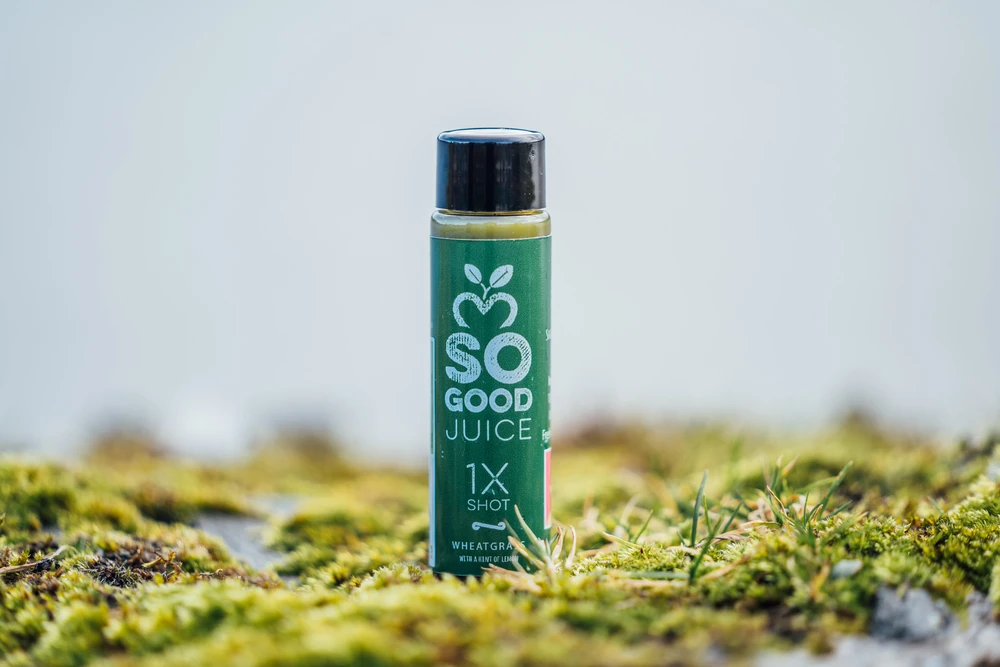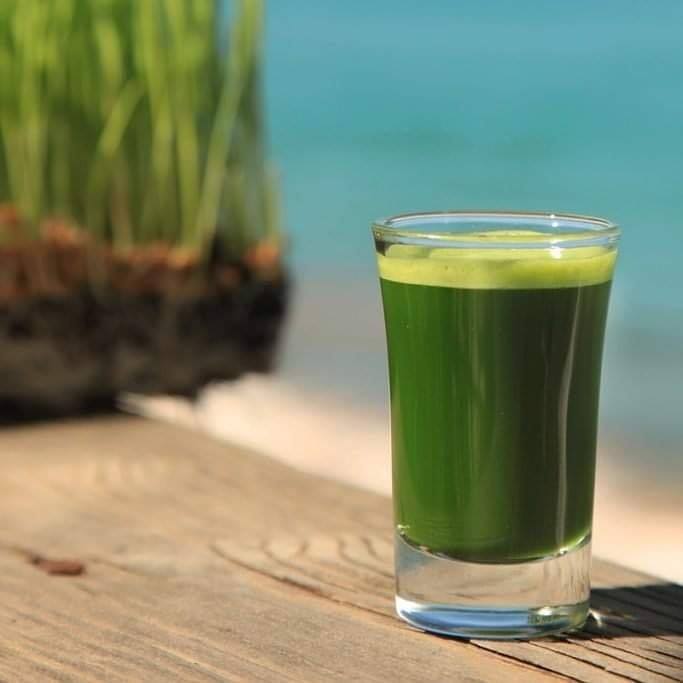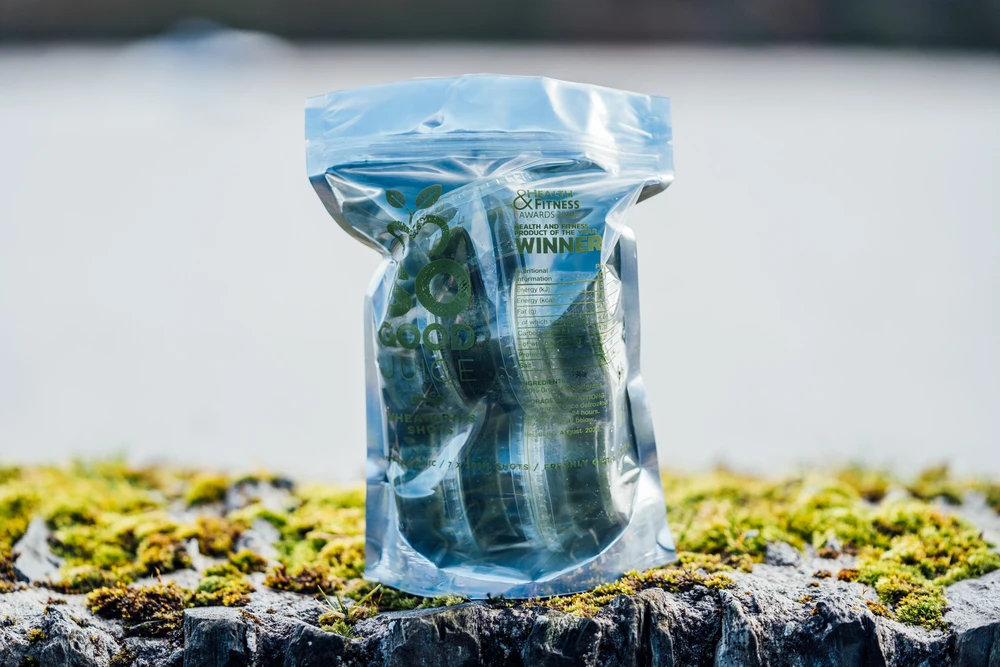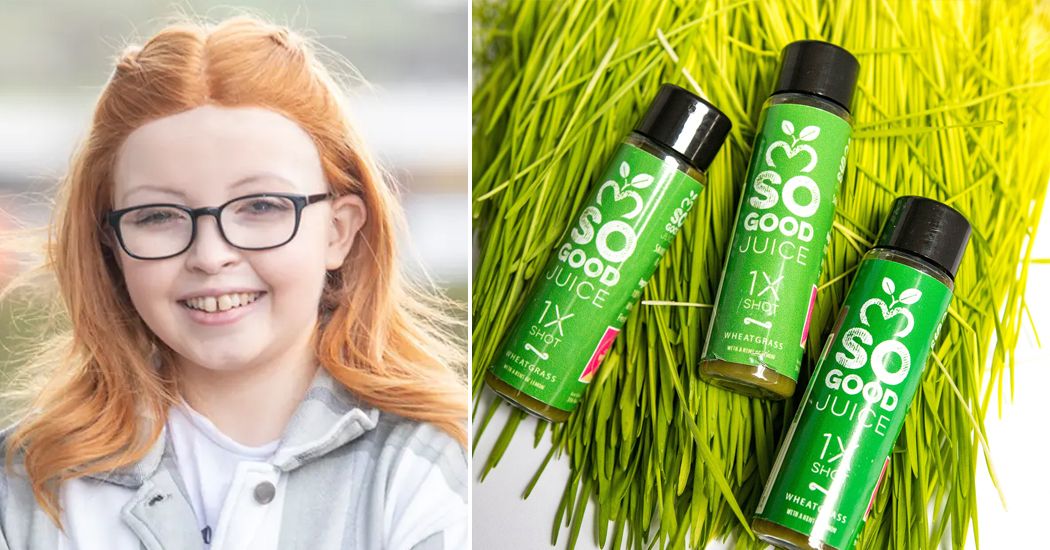Sponsored by So Good Juice – 100% Organic | Home Sown | Home Grown Juices made in the North West – www.sogoodjuice.com
Have you tried wheatgrass? You’ll want to after reading this column! Here, Donegal Nutritionist Sorcha McElchar from Sorchas Healthy Living explains the wonderful benefits of this super green superfood.
For thousands of years humans have used plants for their medicinal properties to treat illnesses and nutrient deficiencies. Wheatgrass is the freshly sprouted leaves of the Triticum aestivum plant, more commonly known as wheat. Wheat is the 2nd most cultivated cereal grain worldwide after rice. Wheatgrass can be consumed in the form of a juice, in tablet or capsule form or in powder form mixed with water. Some people eat it raw.

Wheatgrass shots from companies like So Good Juice in Donegal are a great way to get in your greens
- There are many foods that are good for us due to being packed full of important nutrients and having healing effects, and wheatgrass is one of them! Wheatgrass is packed full of numerous vitamins and minerals including potassium, calcium, iron, zinc, copper, manganese, and selenium. fibre, vitamin A, vitamin B, vitamin E, vitamin C and vitamin K. Vitamins A, C and E and selenium are antioxidants which help fight off the harmful effects of free radicals. It also contains protein and is fat free.
- Wheatgrass contains enzymes that can help with the breakdown of food, thus aiding and improving digestion. Wheatgrass could possibly help relieve constipation and possible help lessen other IBS and digestive issues. More human studies are needed, but the studies that have been carried out so far that looked at wheatgrass as a treatment for digestive issues have had promising results.
- Wheatgrass can aid in weight loss by boosting your metabolism (how fast your body burns energy). It is also full of fibre which will keep you fuller for longer and maintain even blood sugar levels throughout the day.
- Wheatgrass may have the potential to lower Low Density Lipoprotein (LDL) cholesterol, which is the harmful cholesterol that clogs up our arteries. This would lower the risk of developing cardiovascular disease which is the world leading killer.
- The Chlorophyll in wheatgrass (that’s what gives plants that green colour) has anti-bacterial properties, and if applied directly to the skin it can help treat lesions and burns by preventing infection. A 2018 study showed that proteins and antioxidants that are in wheatgrass could possibly help prevent some diseases, reduce oxidative stress which would slow down aging (wrinkles, greying of hair etc) and boost metabolism.
- Due to its high antioxidant content wheatgrass can help fight inflammation in the body. Inflammation is the root cause of most chronic illness.
- The antioxidant properties of wheatgrass could help prevent cancer. The results are very promising with some studies showing it can kill mouth cancer cells. Once again, more human studies are needed as only test tube studies have been carried out so far. Some studies have shown that consuming wheatgrass can lessen the negative side-effects of cancer treatment. Some scientist believe that wheatgrass has a similar structure to haemoglobin, which is the protein in red blood cells that carries oxygen around the body. If this is true wheatgrass would have the ability to increase oxygen levels in the body.
- Wheatgrass has been shown to improve blood sugar levels. Wheatgrass contains very little sugar and is packed full of fibre with 1 tsp containing a whopping 4g of fibre. This is the same amount of fibre you’d get from eating a small apple, or 2 slices of wholemeal bread, or a medium sized potato with the skin on.
So, these are some of the potential health benefits to consuming wheatgrass regularly, but how do you eat grass? Humans aren’t like cows, we can’t digest grass. The best way to consume wheatgrass is by juicing it in a special type of juicer called a masticating juicer. These juicers can be quite expensive if you want a good one.
The potency of wheatgrass is very strong, so you only need a small quantity of it. As for adverse effects, it’s the same advice I give for if you’re increasing your fibre intake…do it slowly! Otherwise you will experience gastrointestinal issues. Start off with maybe a tablespoon a day and work your way up to about 30mls. If your diet has always been high in fibre you may be able to tolerate more than 30ml, but realistically 30mls is more than enough to experience the potential health benefits.

Like most plant-based foods, wheatgrass is an excellent source of fiber. Photo: SoGoodJuice.com
The company ‘So Good Juice’ was founded by Gerard Curran and is based in Donegal and Derry. They take the hassle out of juicing by providing fresh and frozen wheatgrass shots, as well as beetroot shots, turmeric shots, and ginger & apple cider vinegar shots. Gerard started growing wheatgrass after extensive research into the many health and restorative properties in has. Now ‘So Good Juice’ supplies their product not only locally, but throughout the Republic of Ireland and Northern Ireland. For more information on this amazing company and their amazing products that takes the hassle out of sourcing good quality wheatgrass, spending a fortune on the proper juicer and then cumbersome task of juicing it check out their website by clicking the link here: www.sogoodjuice.com

Frozen Wheatgrass Shots from sogoodjuice.com
In conclusion, I think wheatgrass is a great food to add to your diet. Not just because of the potential health benefits, but the fact that such a small amount is packed full of essential nutrients, antioxidants, enzymes and more! The main thing is that eating a balanced diet full of plant-based foods is the way to go to lead a healthier and happier life!
For more, click HERE to follow Sorchas Healthy Living on Facebook.
Tags:







